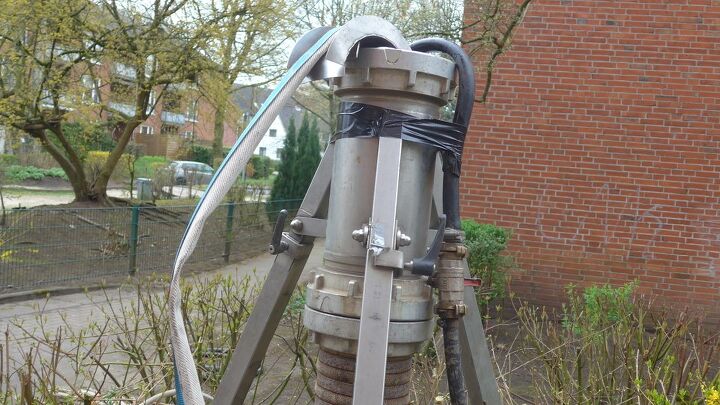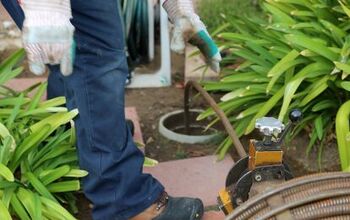How Does Trenchless Sewer Repair Work? (Find Out Now!)

Repairing your sewage lines can be a major headache. And unless you use a specific technique, your property could get destroyed. So, what is trenchless sewer repair, and how does it work? Here’s what you need to know.
Trenchless sewer repair works without digging. That means you don’t have to remove large sections of soil, flooring, or foundation to expose sewage pipes. Engineers use trenchless technology to pinpoint the target zone instead.
Don't want to do it yourself?
Get free, zero-commitment quotes from pro contractors near you.

What Is Trenchless Sewer Repair?
There are many different types of sewage systems, including some with deep or hidden elements. So, engineers invented a way to discover those elements more efficiently. Now, homeowners can fix broken sewer pipes without digging up the ground around them. The process is called “trenchless sewer repair” (TSR), and it’s usually better than traditional methods.
How Does Trenchless Sewer Repair Work?
The TSR process is quite simple, although it requires special tools. First, workers must locate the opening to your sewage line. Then, they carefully dip fiberglass or felt pipe liners in epoxy resin. Finally, those pipe liners are fed through your system to remove clogs and fix leaks.
Once installed, workers will inflate the pipe liner until it presses against the primary line. After that, they let the epoxy resin cure for about 24 hours. Then, workers remove the liner to reveal the finished product. Of course, trenchless sewer repair is not a do-it-yourself job. So, ask a professional to help.
TIP: Look up the public records on your home to see if the local government has information on the location of your sewage lines.
Is Trenchless Sewer Repair Better?
Many homeowners want to know if trenchless sewer repair is better than other methods. The answer is usually yes. TSR offers several benefits, including these three:
- Convenience: You can do most of the work without having to dig trenches through the property.
- Simplicity: Workers seldom have to re-route the sewage line to gain access.
- Speed: Trenchless sewer repair is much faster than conventional approaches.
Most of the time, workers can complete trenchless sewage repair within just a few hours. Meanwhile, other methods can take several days or even weeks to finish. So, be sure to ask your team for more details about the timeline. And keep in mind that TSR isn’t always the least expensive option.
How Long Does Trenchless Sewer Repair Last?
Trenchless sewer repair offers one of the longest-lasting fixes in plumbing. However, it does not solve the problem forever. Instead, it gives homeowners between 50 and 100 years of reliable sewage services. But that timeline depends on several factors.
For one, the longevity of TSR relies on the skill of the workers. For two, the condition of your sewer pipes plays a role. So, if your lines are in severe disrepair, trenchless sewer repair may not be the best answer. Also, it may not last as long if you go that route.
An expert can go over the pros and cons with you. They can outline the project in greater detail as well. That means you can determine the most efficient repair method regardless of which type of sewer system you use. And an expert can also tell you how severe your problems are (or aren’t).
Can Trenchless Sewer Repair Fix a Belly?
Unfortunately, you can’t use trenchless sewer repair on bellied sewage lines. That’s because the epoxy-lined sleeve follows the contours of your system. So, the sleeve will just end up with a belly as well.
Instead of using TSR, homeowners must dig up the portion of piping with the belly. Then, they have to repair that portion before they can move to the next step. And that means they may have to extend their time or expand their budget to accommodate.
Does Homeowner’s Insurance Cover Trenchless Sewer Repair?
All homeowner’s insurance policies are different. Some may cover sewage line repairs while others won’t. Always check your policy to make sure your project is covered before hiring a professional. Most of the time, your policy will include coverage under certain circumstances.
For example, your insurance provider may require proof of peril to pay for the damage. But if you need repairs because of sewage line neglect, it will be up to you to pay for services. Meanwhile, workers calculate trenchless sewer repair costs per square foot.
How Much Does Trenchless Sewer Repair Cost?
TSR ranges in price based on many variables. However, you can expect to pay between $80 and $250 per square foot. Plus, that price can increase if you need to replace sections of the pipe.
The total average cost of trenchless sewer repair ranges from $6,000 to $12,000. But that total can vary depending on the service provider and the severity of your plumbing problems.
Fix Your Pipes Fast
It may not be the cheapest method, but TSR is one of the most efficient. So, fix your pipes fast and stop digging up the earth around your house.
Don't want to do it yourself?
Get free, zero-commitment quotes from pro contractors near you.

Related Questions
How Can You Tell If Your Sewer Line Is Broken?
There are many ways to spot trouble in your sewer lines. Look for lush or soggy spots in your yard to uncover subterranean issues. And watch our foul odors throughout your house. For example, if your basement smells terrible, there’s likely a clog somewhere. So, contact a professional if you think there’s a problem.
How Do You Fix a Broken Sewer Line?
Fixing a broken sewer line isn’t cheap or easy. You may even have to dig up your yard to find faulty pipes. However, trenchless sewer repair can help fix issues without digging. So, discuss the pros and cons with your contractor.
What Causes a Belly in a Sewer Pipe?
Sewer line bellies are also called low areas or bubbles. They happen when large amounts of debris get stuck in the system. The debris causes a blockage, and the pipes then flex to make room for it. Meanwhile, things like erosion, foundation settling, and natural disasters can cause pipe bulges as well.
Related Guides

Tiffany Nichols specializes in aesthetics, design, marketing, and manufacturing. She's a copywriter and editor for several home renovation companies in the U.S. and works alongside some of the biggest names in the industry. Her hobbies include architecture, art, mental health, and fashion.
More by Tiffany Nichols



























